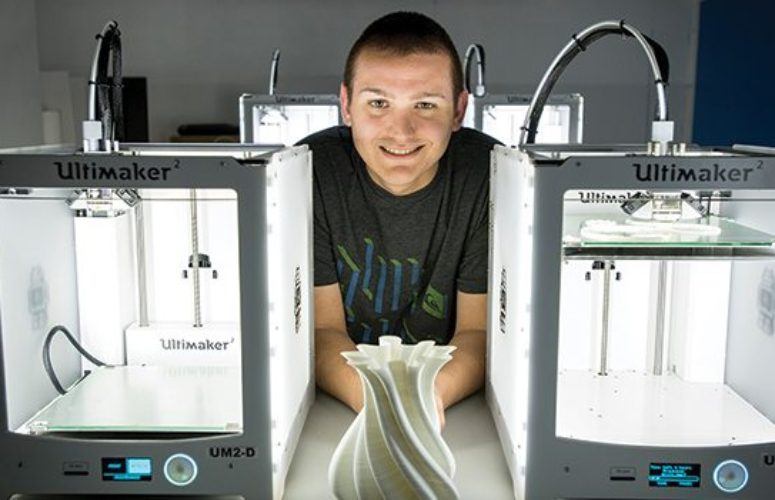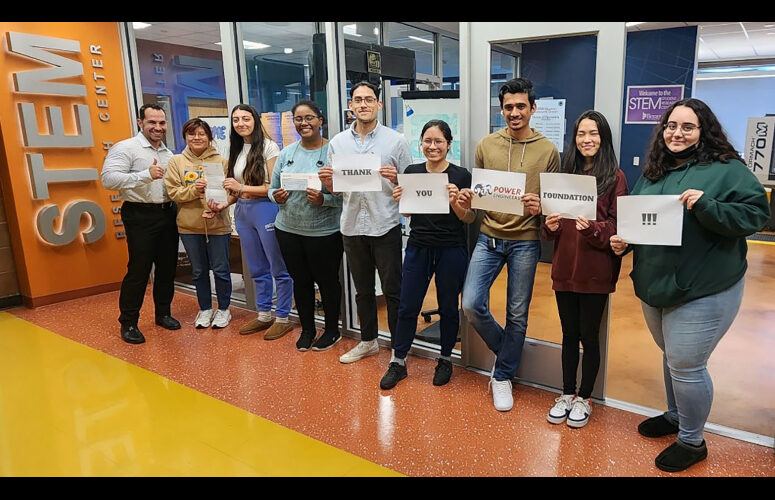
State is Progressive in Promoting STEM
Training NJ's Workforce
By Lisa Goulian Twiste, Contributing Writer On Mar 20, 2017The term STEM (Science, Technology, Engineering and Mathematics) first caught on in the late 1990s, referring to education policy and curriculum designed to improve competitiveness in science and technology related subjects. It was around this time the US began to see declining enrollment and graduates in STEM related fields, leading educators to increase programming at the junior high, high school and collegiate levels. Almost two decades later, New Jersey is among the most progressive states in promoting STEM across grade levels, as government agencies, universities and corporations work together to advance education and programming.
“In comparisons with other states, New Jersey benefits from its high number of corporate research and development laboratories,” says New Jersey Secretary of Higher Education Rochelle Hendricks, citing a recent study showing New Jersey has the best corporate/academic collaboration rate in the nation. “This means that corporations are embracing higher education as partners in research, and through the Partnership for Action led by Lt. Governor Kim Guadagno, and the Council on Innovation, which I chair, we are looking to support and facilitate additional partnerships.”
The New Jersey Department of Education continues to sponsor programs for K-12 STEM education, while $1.5 billion in higher education spending by Governor Christie’s administration over the last three years has helped build state-of-the-art facilities and laboratories at The New Jersey Institute of Technology (NJIT) and Rutgers University, as well as a new engineering building that opened at Rowan University in January. In addition, the state recently invested $19.25 million in Stevens Institute of Technology via GO and CIF funding for a STEM-focused academic building.
“Enrollment is up in engineering programs throughout the state. The demand is there, and we’re producing a good number of engineers,” says Dr. Anthony Lowman, dean of the College of Engineering at Rowan, which has been placing 95 percent of its engineering students in jobs at graduation. Rowan’s latest STEM-related efforts include a new undergraduate program in biomedical engineering (first class set to graduate in 2019) and an engineering entrepreneurship program that trains students to lead startup technology companies. The university is also promoting an outreach program that finds students with an interest in – and aptitude for – STEM subjects in middle school and reinforces that interest through summer camps and other programs during the high school years.
In addition, Rowan’s College of Engineering is partnering with the College of Education, School of Arts and Environment and others on campus in an effort to build up STEM initiatives. “We try to offer our programs across as broad an audience as possible, interweaving those programs so students can be exposed to all disciplines,” Lowman says.
Stevens Institute of Technology is also teaching integrated classes in science, technology, engineering and mathematics in a way that synthesizes these subjects into real-world context, according to Arthur Camins, former director of the Center for Innovation in Science and Engineering. Ideas behind Stevens’ STEM program include: providing students with the soft skills needed to succeed in today’s global economy; developing an entrepreneurial mindset from both an intellectual and practical approach; and encouraging interdisciplinary study so students can learn a broad range of fundamentals that extend beyond math and science.
NJIT, New Jersey’s “public STEM university,” is conducting nearly $140 million in STEM-related research and development in areas ranging from new pharmaceutical manufacturing technologies and treatment of traumatic brain injury, to deploying a China-wide system of ultra-high speed bullet trains. The university is also helping feed the STEM pipeline by introducing more than 4,000 pre-college students each year – predominantly underrepresented females and minorities from the greater Newark area and northern New Jersey – to STEM-related fields through its Center for Pre-College Programs.
“STEM has become pervasive in virtually every aspect of our lives,” says Dr. Joel Bloom, NJIT president. “It is entwined throughout the industries that drive our national and global economies, including our healthcare systems, military and defense systems, manufacturing, transportation and every other business sector you can imagine.”
In fact, partnerships between educators and industry are a major catalyst in driving STEM forward in New Jersey. PSE&G, for one, is helping recruit future engineers at the pre-college level in Salem, Gloucester and other counties, while Lockheed Martin created a corporate model for how to work with higher education, including a relevant engineering curriculum that directly prepares students to enter the workforce. “Jobs in STEM are the careers of tomorrow, and New Jersey higher education institutions need to continue to partner with business and industry to create more opportunities for students while meeting the needs of the state economy,” Hendricks says.
NJIT’s efforts include an extensive list of co-ops and internships, industry collaborative research, and business start-ups, and the university has also established Industrial Advisory Boards to help students develop relationships with professionals in relevant industries. In addition, NJIT’s Enterprise Development Center houses more than 95 start-up companies where 300-plus NJIT students work each year, as well as the New Jersey Innovation Institute (NJII), which provides contract research and development services to industry and government clients.
“One of the results of which I am most proud is that these efforts have led to our students receiving an average of nearly three job offers by the time they reach graduation, with starting salaries exceeding the national average by almost 20 percent,” Bloom says.
Universities are also working with state agencies such as the Department of Transportation (DOT), Department of Military and Veteran Affairs, and Department of Environmental Protection to sponsor summer internships and other programs. In addition, New Jersey has identified the design, computing, engineering and life sciences clusters in its State Strategic Job Growth Plan, which aims to use technology and the sciences to improve quality of life and spur economic growth.
“Like private industry, the state has a huge interest in training engineers for their departments,” Lowman says. “We’re looking at internships with the DOT because, even if these students don’t go to work with the DOT, they will go to work for companies that work with the DOT. It creates a trained workforce that’s going to be building the roads and bridges of the future.”
As part of this future, STEM advocates are trying to improve diversity throughout STEM fields, reaching out to more students in rural and urban areas who don’t get as much exposure to science and math programs that prepare them for college. “The whole STEM thing started because we began losing our place as a global leader,” Lowman says. “We have gone from being a hands-on workforce to a minds-on workforce. That’s why we need to train the best and brightest in order to protect our economy and our future.”
Experts agree that STEM education will become even more important in an increasingly tech-driven society that encompasses many fields, including energy systems, medicine, roads and all other innovations driven by engineers. “The STEM landscape is changing rapidly,” Hendricks says. “For many, careers in the science and engineering fields will be obtained with a traditional college degree, but many institutions are also offering certificates that can be earned in several months or weeks, for specific skills in high demand fields that can help students find employment faster.”
“The application of technology and the interdisciplinary movement within STEM disciplines – engineering and the health sciences and computing and big data, for example – all dramatically affect the way we live our lives,” Bloom says.
Related Articles:






